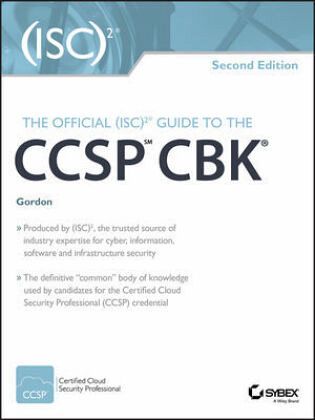Nicht lieferbar

The Official (ISC)2 Guide to the CCSP CBK
Versandkostenfrei!
Nicht lieferbar
Weitere Ausgaben:
Globally recognized and backed by the Cloud Security Alliance (CSA) and the (ISC)² the CCSP credential is the ideal way to match marketability and credibility to your cloud security skill set. The Official (ISC)² Guide to the CCSP(SM) CBK Second Edition is your ticket for expert insight through the 6 CCSP domains. You will find step-by-step guidance through real-life scenarios, illustrated examples, tables, best practices, and more. This Second Edition features clearer diagrams as well as refined explanations based on extensive expert feedback. Sample questions help you reinforce what you ha...
Globally recognized and backed by the Cloud Security Alliance (CSA) and the (ISC)² the CCSP credential is the ideal way to match marketability and credibility to your cloud security skill set. The Official (ISC)² Guide to the CCSP(SM) CBK Second Edition is your ticket for expert insight through the 6 CCSP domains. You will find step-by-step guidance through real-life scenarios, illustrated examples, tables, best practices, and more. This Second Edition features clearer diagrams as well as refined explanations based on extensive expert feedback. Sample questions help you reinforce what you have learned and prepare smarter.Numerous illustrated examples and tables are included to demonstrate concepts, frameworks and real-life scenarios. The book offers step-by-step guidance through each of CCSP's domains, including best practices and techniques used by the world's most experienced practitioners. Developed by (ISC)², endorsed by the Cloud Security Alliance(r) (CSA) and compiled and reviewed by cloud security experts across the world, this book brings together a global, thorough perspective. The Official (ISC)² Guide to the CCSP CBK should be utilized as your fundamental study tool in preparation for the CCSP exam and provides a comprehensive reference that will serve you for years to come.




